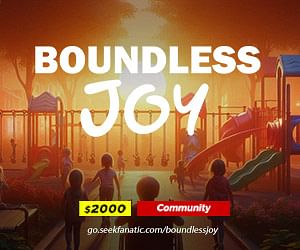Boundless Joy: Designing Playgrounds for Every Child
Registration Deadline: Sep 25, 2024; Submission Deadline: Sep 25, 2024 REGISTER NOW (SAVE 58% OFF + 5% EXTRA - Fee Waiver Enabled) PremiseDesign a universally accessible playground that caters to children with all types of disabilities. The challenge is to create not just a play area but a vibrant space that ensures safety, inclusivity, and endless fun for children with diverse needs.IssueThe critical issue at the heart of this competition is the urgent need to provide playgrounds that welcome all children, regardless of their physical, sensory, or cognitive abilities. Most existing playgrounds lack universal accessibility, inadvertently excluding children with disabilities from the joy of play and vital social interactions. This competition aims to address this gap by fostering the creation of inclusive play spaces that allow every child to experience the delight of play while promoting social inclusion, community, and equality.ObjectiveThe objective of this architectural competition is to inspire participants to design playgrounds that are universally accessible and cater to children with various disabilities. Your challenge is to transcend conventional playground designs and envision an inclusive environment where every child can play together safely and joyfully. The ultimate goal is to create a playground that is a beacon of inclusivity, where barriers are eliminated, and every child can experience the sheer joy of play and the power of social connection.REGISTER NOW (SAVE 58% OFF + 5% EXTRA - Fee Waiver Enabled)SiteParticipants are encouraged to choose a site within their own locality for their playground design. The selected site should be an urban park area that is less than 500 square meters, ideally located near residential neighborhoods and schools. This flexibility allows participants to consider local needs and contexts while ensuring the playground serves a wide community. Designs should complement the existing park environment, utilizing the natural landscape to enhance the play experience and provide a safe, inclusive space for all children.Constraints1. Accessibility: Designs must ensure that all playground features are accessible to children with physical, sensory, and cognitive disabilities. This includes wheelchair accessibility, sensory play elements, and inclusive equipment. 2. Safety: Safety is paramount. Playgrounds must comply with international safety standards and regulations to prevent injuries. 3. Inclusivity: The design should promote social interaction among children of all abilities, encouraging play and collaboration. 4. Durability and Maintenance: Materials used should be durable and easy to maintain, ensuring the playground remains safe and functional over time. 5. Cost-effectiveness: The playground should be affordable to construct and maintain, considering budget constraints typical for community projects. 6. Aesthetic Integration: The design should harmonize with the surrounding environment, creating a visually appealing space that enhances the overall park experience. 7. Community Input: Consideration should be given to input from the local community, including children and parents, to ensure the playground meets their needs and preferences.REGISTER NOW (SAVE 58% OFF + 5% EXTRA - Fee Waiver Enabled)Read the full post on Bustler


Registration Deadline: Sep 25, 2024; Submission Deadline: Sep 25, 2024
REGISTER NOW (SAVE 58% OFF + 5% EXTRA - Fee Waiver Enabled)
Premise
Design a universally accessible playground that caters to children with all types of disabilities. The challenge is to create not just a play area but a vibrant space that ensures safety, inclusivity, and endless fun for children with diverse needs.
Issue
The critical issue at the heart of this competition is the urgent need to provide playgrounds that welcome all children, regardless of their physical, sensory, or cognitive abilities. Most existing playgrounds lack universal accessibility, inadvertently excluding children with disabilities from the joy of play and vital social interactions. This competition aims to address this gap by fostering the creation of inclusive play spaces that allow every child to experience the delight of play while promoting social inclusion, community, and equality.
Objective
The objective of this architectural competition is to inspire participants to design playgrounds that are universally accessible and cater to children with various disabilities. Your challenge is to transcend conventional playground designs and envision an inclusive environment where every child can play together safely and joyfully. The ultimate goal is to create a playground that is a beacon of inclusivity, where barriers are eliminated, and every child can experience the sheer joy of play and the power of social connection.
REGISTER NOW (SAVE 58% OFF + 5% EXTRA - Fee Waiver Enabled)
Site
Participants are encouraged to choose a site within their own locality for their playground design. The selected site should be an urban park area that is less than 500 square meters, ideally located near residential neighborhoods and schools. This flexibility allows participants to consider local needs and contexts while ensuring the playground serves a wide community. Designs should complement the existing park environment, utilizing the natural landscape to enhance the play experience and provide a safe, inclusive space for all children.
Constraints
1. Accessibility: Designs must ensure that all playground features are accessible to children with physical, sensory, and cognitive disabilities. This includes wheelchair accessibility, sensory play elements, and inclusive equipment.
2. Safety: Safety is paramount. Playgrounds must comply with international safety standards and regulations to prevent injuries.
3. Inclusivity: The design should promote social interaction among children of all abilities, encouraging play and collaboration.
4. Durability and Maintenance: Materials used should be durable and easy to maintain, ensuring the playground remains safe and functional over time.
5. Cost-effectiveness: The playground should be affordable to construct and maintain, considering budget constraints typical for community projects.
6. Aesthetic Integration: The design should harmonize with the surrounding environment, creating a visually appealing space that enhances the overall park experience.
7. Community Input: Consideration should be given to input from the local community, including children and parents, to ensure the playground meets their needs and preferences.
REGISTER NOW (SAVE 58% OFF + 5% EXTRA - Fee Waiver Enabled)Read the full post on Bustler
